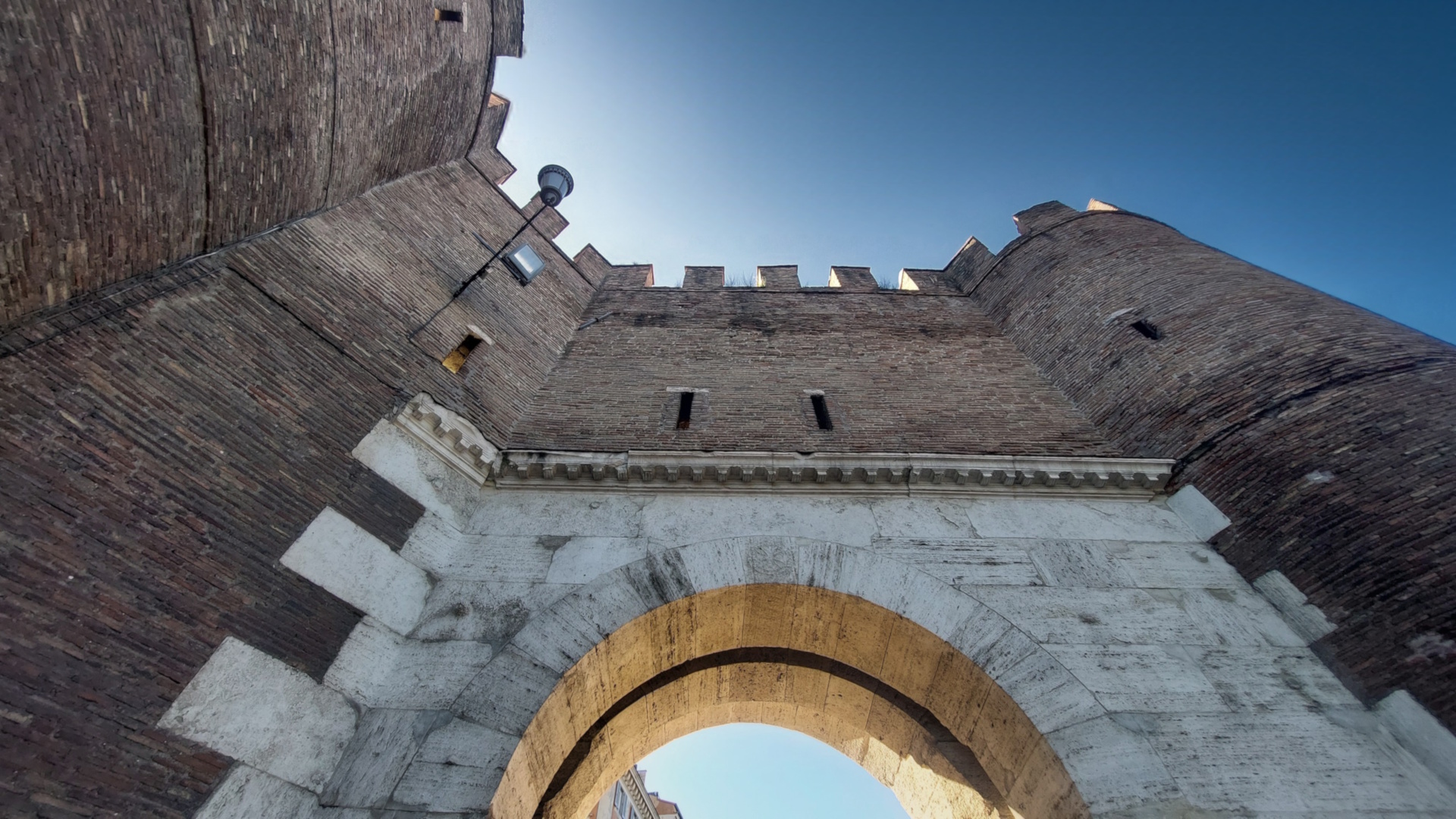
A gateway at the crossroads of history
Perfectly embedded in the Aurelian Walls, one of the largest and best-preserved fortifications of the ancient world, a simple and elegant travertine arch flanked by towers acts as a divide to a busy crossroads between Villa Borghese and Via Veneto, the symbolic street of La Dolce Vita. Its name is Porta Pinciana and it is one of the few gates in Rome to have preserved its original appearance over time, except for the side arches opened in modern times for reasons of road traffic. Born without pomp, at the end of the 3rd century, i.e., at the time of the construction of the walls by the Emperor Aurelian, it was only a “posterula”, a minor pedestrian passage. Barely a century later, however, the ever more pressing threat of the barbarian populations had convinced the Emperor Honorius to raise the entire wall and reinforce the gates, adding defensive towers, battlements and guard posts in the sections that were lacking, such as at Porta Pinciana or Porta Asinaria. With its two new rounded and strangely asymmetrical towers and its position on top of the Pincian Hill, the gate would prove to be of strategic importance on at least one occasion, during the failed siege of the city by king Vitiges’s Ostrogoths.
Pinciana, Salaria, Turata, Belisaria...
Its present name derives from the gens Pincia, who in the 4th century owned the hill on whose steep slopes the gate and the walls were built. Over the centuries the gate had also had other names, Porta Salaria Vetus, for instance, because this was the starting point of the ancient “salt road”, traced perhaps even before the birth of Rome, or Porta Turata, because it was walled up several times during its long history, in the 8th century as well as in 1808. Medieval popular tradition also assigned it the name “Porta Belisaria”. From a historical point of view, the gate is indeed closely linked to the memory of the Byzantine general Belisarius, who between 537 and 538 repulsed the attempted assault on the city by the army led by Vitiges during the long Greek-Gothic war along this stretch of wall. The Greek and Latin crosses carved in the keystones outside and inside the arch may also date back to this period, signifying that the Latin city was defended by a Byzantine army. A fortunate legend that arose in the Middle Ages tells that Belisarius, disgraced for having taken part in a conspiracy against the emperor Justinian, stripped of his possessions and made blind, would spend his last years in Rome, begging on the threshold of the gate that had been the epicenter of his glory. As evidence of the story, a graffito inscription would be visible on the door until the 19th century that read “date obolum Belisarius” (give a penny to Belisarius). This is a phrase that became proverbial of the transience of fame and was also taken up in the 18th century in the famous painting “Belisarius begging for alms” by the French painter Jacques-Louis David.
From Belisarius to Christo
Dedicated to Belisarius (or Alexander the Great) was perhaps also the huge marble bust that we can still admire today in a niche a short distance from the gate. Before the opening of Via Veneto and the construction of the neighborhood that gravitates around it, the sculpture served as a backdrop to one of the wide tree-lined avenues of the spectacular Villa Ludovisi, sacrificed shortly after the unification of Italy on the altar of building speculation. The villa had been built in the 17th century by Cardinal Ludovico Ludovisi, nephew of Pope Gregory XV, and its gardens lined the stretch of wall around the gate, which was never particularly important from the point of view of city traffic. From the end of the 19th century, the walkway of the walls from Porta Pinciana to Porta Salaria (reopened to the public in 2021) was home to studios and artists‘ residences, for example that of Ettore Ferrari, author of the monument to Giordano Bruno in Campo de’ Fiori. The most peculiar experiment, however, was that of the ceramist Francesco Randone who, in Tower XXXIX in Via Campania, opened in 1890 a “free school for girls and boys from the age of six to fifteen, without distinction of class, religion or culture”: the Scuola d’Arte Educatrice, still in operation today. In January 1974, the gate was finally the protagonist of a spectacular land art intervention for forty days. In four days, the artists Christo and Jeanne-Claude de Guillebon wrapped both sides of the walls with nylon sheets and orange ropes in one of their famous temporary “wrappings” that hid from view and momentarily transformed reality, to give observers a new awareness.
Information
 Condividi
Condividi
Location
To find out about all accessibility services, visit the Rome accessible section.











































